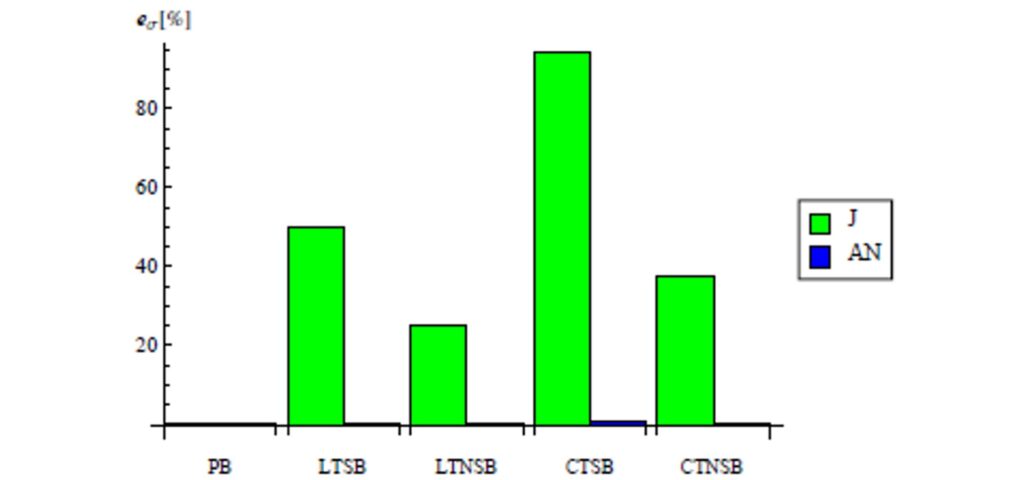Introduction
In the most of Finite Element analysis performed by practitioners, displacement-based beam and plate models are used. Unfortunately, these models must often be corrected by shear factors, suffer from locking phenomena, and generally give a low accurate stress description. By the contrary, it is possible to set up mixed beam and plate finite elements (in which also stresses and strains are considered as independent variables) which are generally locking-free and give a more accurate stress description. Unfortunately these (sometimes called “exotic”) models could be not compatible with classical ones, use a non-conform formulation, and stability problems lead often the methods to be extremely complicated to manage.
Goal
Our purpose is to look for a new development pathway that takes the best properties of both approaches while minimizing and controlling the disadvantages.
Methods
Starting from the 3D formulation fo the elastic problem, the aim is to be able to operate a “dimensional reduction of the problem”, obtaining the 1D beam model or the 2D plate model. As a second step, it is then possible to develop suitable 1D or 2D Finite Elements or apply other numerical techniques.
Results
Fig. 1: Stresses σx(x) and τ(x) of a three layer, homogeneous cantilever, clamped in x = 0, loaded in the opposite extremity by a quadratic shear distribution and modeled by means of 64 elements. It is evident that the model under investigation is able to catch the boundary effects of bounded extremity.
Fig. 2: Comparison of section stress distribution in a laminated beam. The red dotted line is the solution obtained from the beam model, the blue continue one is the overkilled solution of the planar problem under investigation.
Fig. 4: Out of plane shear stresses ?xz and ?yz evaluated for 3 layers, non homogeneous, orthotropic, square, and simply supported plate, fiber orientation 0/90/0, distribution along the thickness. Elasticity is the analytical solution (see Pagano 1970), FSDT in the First Order Deformation Theory, Current Work is the proposed model.
Fig. 6: Percentage error of the shear stress results evaluated with respect to the FE solution. The labels, J and AN, indicate the Jourawsky and the analytical solutions. The labels, PB, LTSB, LTNSB, CTSB and CTNSB, indicate prismatic beam, linearly tapered symmetric beam, linearly tapered non-symmetric beam, curvilinearly tapered symmetric beam and curvilinearly tapered non-symmetric beam, respectively.
Main Collaborations
- Dipartimento di Matematica “Felice Casorati” Università degli studi di Pavia
- Institut für Mechanik der Werkstoffe und Strukturen TU Wien
References
- S. M. Alessandrini, D. N. Arnold, R. S. Falk, and A. L. Madureira, “Derivation and justification of plate models by variational methods”, pp. 1–20 in Plates and shells (Quebec, 1996), edited by M. Fortin, CRM Proc. Lecture Notes 21, Amer. Math. Soc., Providence, RI, 1999.
- F. Auricchio and E. Sacco, “A mixed-enhanced finite-element for the analysis of laminated composite plates”, Int. J. Numer. Methods Eng. 44 (1999), 1481–1504.
- F. Auricchio, C. Lovadina, and A. L. Madureira, “An asymptotically optimal model for isotropic heterogeneous linearly elastic plates”, M2AN Math. Model. Numer. Anal. 38:5 (2004), 877–897.
- E. Reissner, “On a variational theorem and on shear deformable plate theory”, Int. J. Numer. Methods Eng. 23 (1986), 193–198.
Group publications
- F. Auricchio, G. Balduzzi, C. Lovadina. A new modeling approach for planar beams: finite-element solutions based on mixed variational derivations. Journal of Mechanics of Materials and Structures, 5 (2010), 771-794.
- F. Auricchio, G. Balduzzi, C. Lovadina. The dimensional reduction modelling approach for 3D beams: Differential equations and finite-element solutions based on Hellinger–Reissner principle. International Journal of Solids and Structures, 50 (2013), 4184–4196.
- F. Auricchio, G. Balduzzi, M.J. Khoshgoftar, G.R. Rahimi, R. Sacco. Enhanced modeling approach for multilayer anisotropic plates based on dimension reduction method and Hellinger–Reissner principle. Composite Structures, 118 (2014) 622-633.
- F. Auricchio, G. Balduzzi, C. Lovadina. The dimensional reduction approach for 2D non-prismatic beam modelling: A solution based on Hellinger–Reissner principle. International Journal of Solids and Structures, 63 (2015) 264–276.







